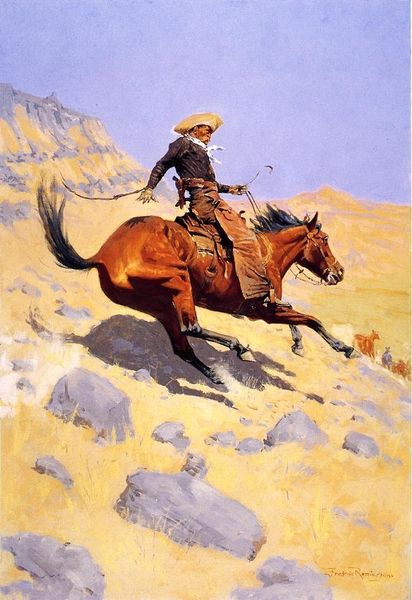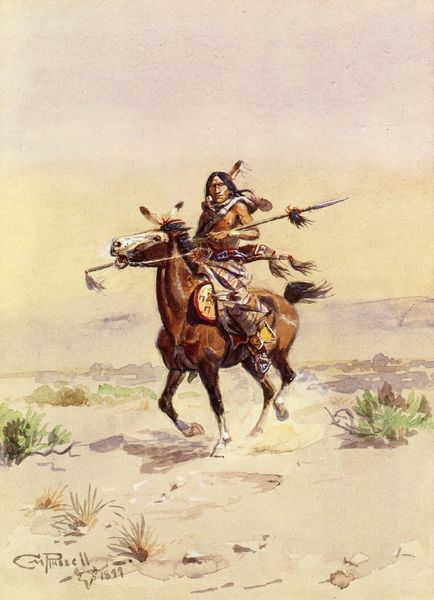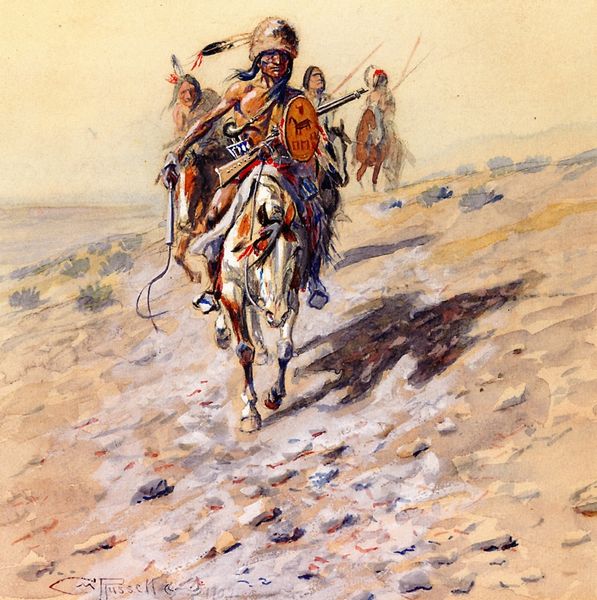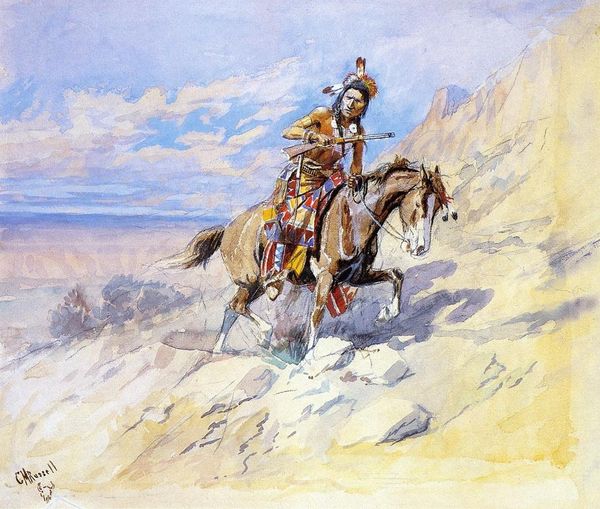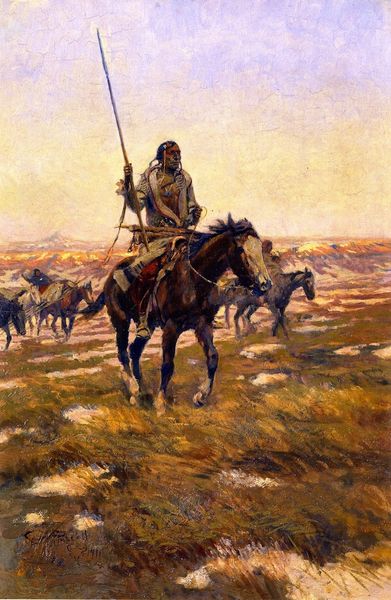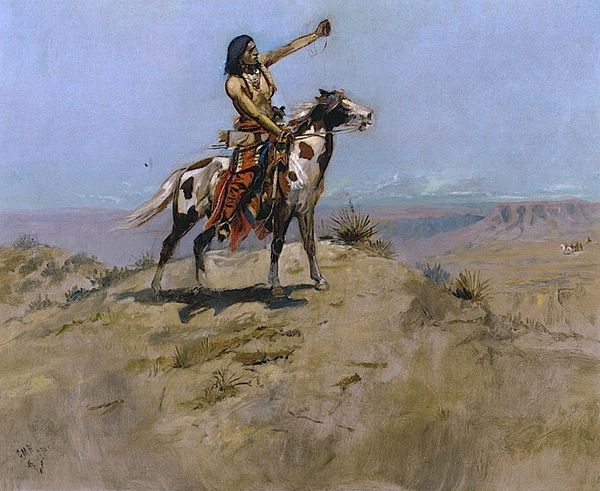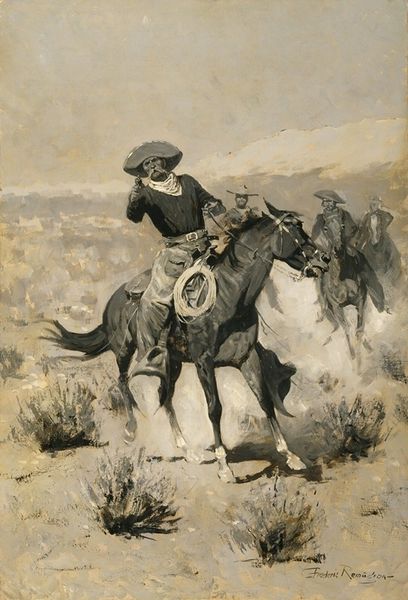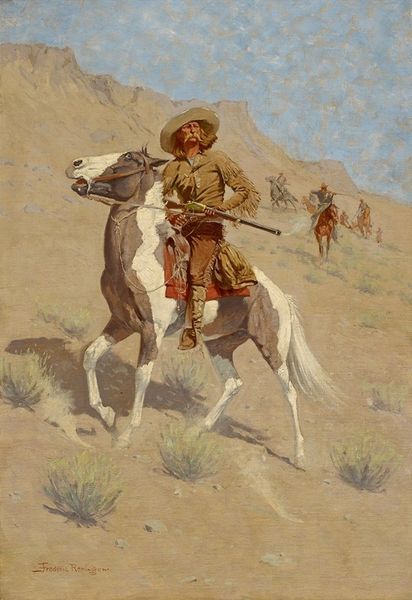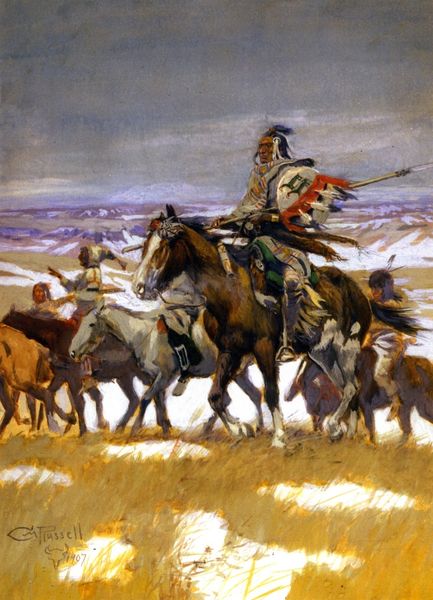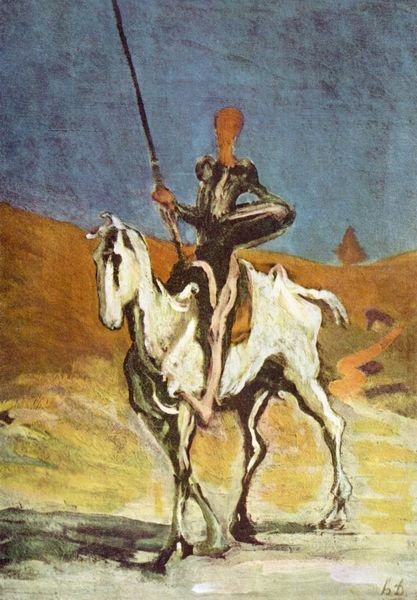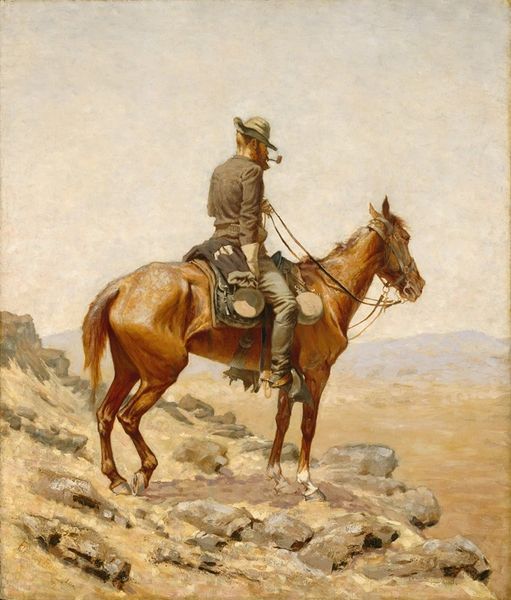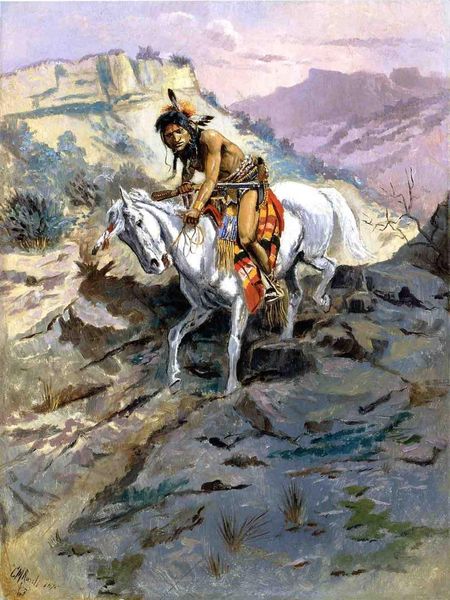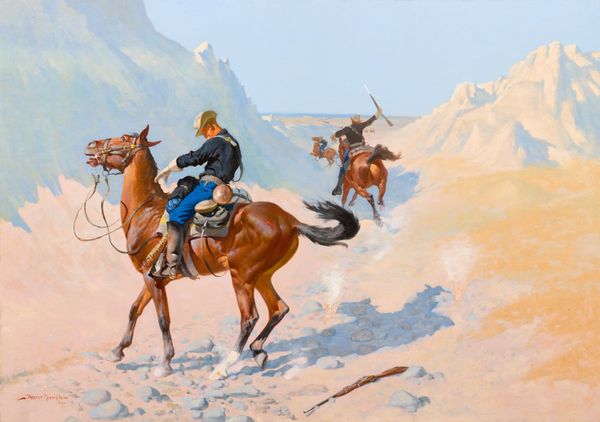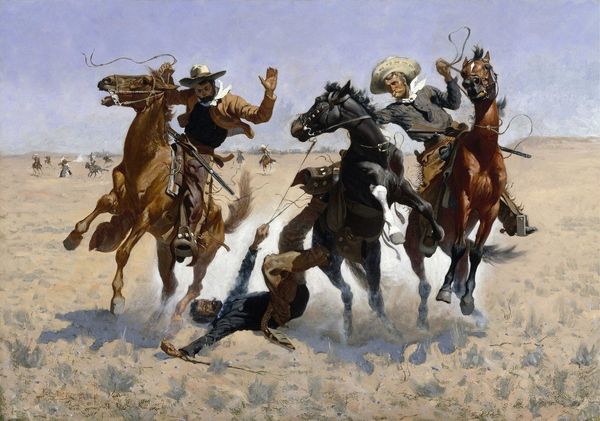
painting, oil-paint
#
figurative
#
narrative-art
#
painting
#
oil-paint
#
landscape
#
figuration
#
oil painting
#
watercolor
Copyright: Public Domain: Artvee
Editor: Here we have Frederic Remington’s "The Blanket Signal," painted in 1896 using oil paint. I’m struck by the tension, how this lone figure commanding such a vast, almost desolate landscape seems both powerful and vulnerable. What's your take? Curator: That tension is key. Think about the context. Remington's work romanticized the American West, but that romanticism existed alongside the brutal reality of westward expansion and the systematic displacement of Indigenous peoples. How do you see that playing out here? Editor: I guess, despite the heroism implied in signaling, there’s an inherent power imbalance. The individual is silhouetted against the landscape, yes, but the landscape itself seems indifferent. Curator: Precisely. The “blanket signal” is an act of communication, a plea for connection or aid. But consider who might be receiving that signal and what power they hold. The painting invites us to consider the politics of representation. Is this a dignified portrayal or another example of appropriating and romanticizing a culture on the brink of forced assimilation? How might this image function as propaganda, fueling a particular narrative of the "Wild West"? Editor: So, the focus isn't just on what's depicted, but *why* it was depicted and for whom. Is it fair to view Remington as glorifying conflict, despite the consequences? Curator: It's crucial to remember the intended audience. Remington was catering to a late 19th-century Eastern readership hungry for adventure and stories of the frontier. This imagery reinforced ideas about American exceptionalism, justifying westward expansion, even at the cost of Indigenous sovereignty. What kind of ethical implications do you feel this carries? Editor: It's really forced me to consider how art isn't just a reflection of culture, but actively shapes it, reinforcing power structures, or even challenging them. Curator: Exactly. This artwork serves as a potent reminder of the intertwined relationship between art, power, and history, revealing more with each analysis.
Comments
No comments
Be the first to comment and join the conversation on the ultimate creative platform.
